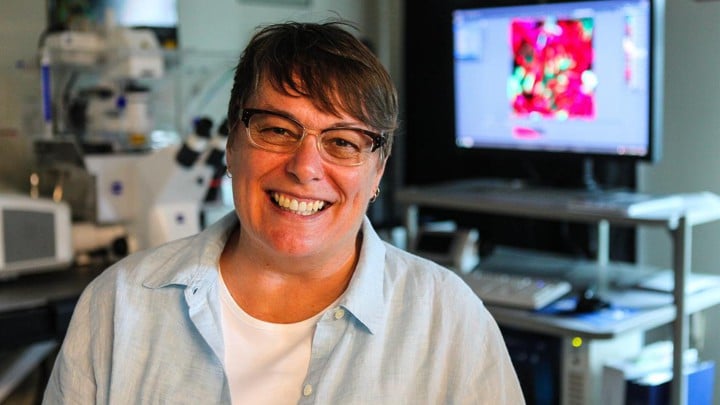The Fight for Corals Loses Its Great Champion
Ruth Gates was a champion of corals and a longtime partner of the Herbert W. Hoover Foundation. Her contributions to marine science will be felt for decades to come and the Foundation is proud to have supported her research. We, along with the scientific community and her friends and family, mourn her loss.
Original article can be found at: www.theatlantic.com/science/archive/2018/10/optimist-who-believed-saving-corals/574240/
By Ed Young
Ruth Gates, who died Thursday, October 25, 2018 at age 56, was known as much for her laugh as for her science. She laughed easily, loudly, and infectiously. When she first snorkeled around Heron Island, in Australia’s Great Barrier Reef, she reportedly laughed so loudly that boat drivers could hear her from the surface. “Laughing even underwater—that’s Ruth,” says Tracy Ainsworth, a close friend and coral scientist at The University of New South Wales at Sydney. “She was so thrilled by the reef that she couldn’t contain her joy.”
Gates passed away five months after she was first diagnosed with brain cancer. She is survived by her wife, Robin Burton-Gates; her brother, Tim Gates; her extended family; and a vast community of colleagues and friends. “We constantly laughed, even through her treatments,” says Burton-Gates.
To lose anyone is tragic, but to lose someone like Gates—an optimist’s optimist, a cornerstone of hope—is especially so. Her friends collectively describe her as someone who truly contained multitudes. Empath and fighter, iconoclast and team player, introvert and spokesperson—she was all these things, as well as an outspoken advocate for corals and the people who study them. “She was radiance that we were privileged to gather around, our hands toward the fire,” said Ouida Meier, one of her lab managers, in an email to her team.
Gates, who was born in England, decided she wanted to be a marine biologist in elementary school, after watching Jacques Cousteau documentaries. “She was told she wasn’t smart enough, and that she should go into athletics instead,” Burton-Gates recalls. In typical fashion, she ignored her detractors and did both. She eventually became the director of the Hawai‘i Institute of Marine Biology and the founder of a nearby karate school, the Coconut Island Dojo. A third-degree black belt, she would do knuckle and fingertip push-ups to the sound of breaking waves. And “when she hit the practice bag, it sounded like a gun going off,” says Burton-Gates.
This path to scientist and sensei was a long one. She moved to Jamaica in 1985 as a naive graduate student who just happened to find herself studying Caribbean corals at a time when they were starting to die. The corals would expunge the colored microscopic algae that live in their tissues and provide them with nutrients, becoming wan and weak in the process. Gates showedthat these bleaching events were more common in warmer waters—a crucial connection that decades of later work would confirm. “It was a terribly important discovery,” says Peter Edmunds of California State University at Northridge, a coral scientist and close friend of 34 years.

